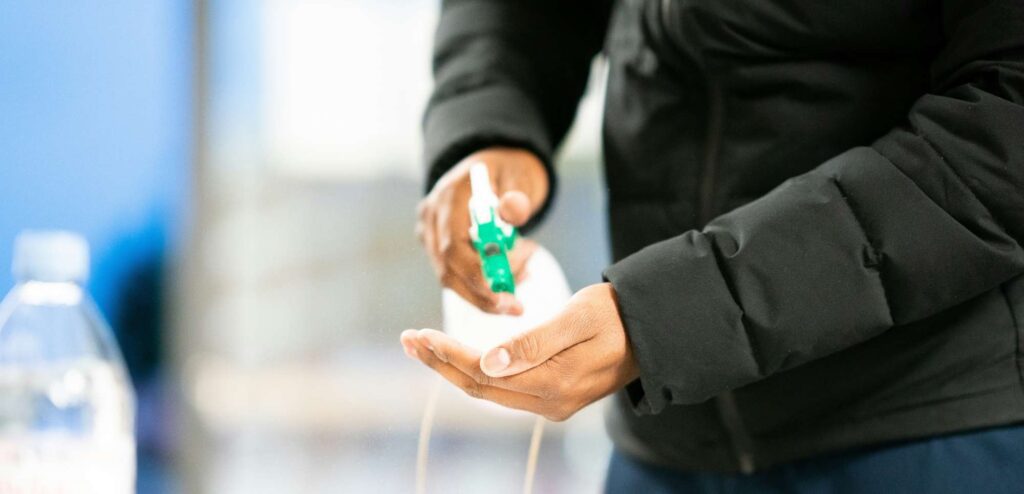Understanding Detergents: Types and Uses in Cleaning and Washing Operations
Detergents are chemicals or mixtures used in all washing and cleaning operations, with the exception of personal cleaning operations.
This term generally indicates:
- auxiliary preparations for washing: i.e. those used for soaking, rinsing and bleaching clothing, household linen and other similar materials);
- fabric softeners;
- the preparations used to clean: that is, those used in domestic cleaning and, in general, of any type of surface (whether they are materials such as metals, products, machines for domestic or industrial use);
- all preparations used for cleaning and washing that do not fall into the categories just indicated.
In practice, all types of soap—whether liquid, spray or solid—used in common washing procedures, from floors to clothes, and applied with any type of accessory, are considered detergents as long as they do not come into contact with the skin.
Detergents: Ingredients, Formulations and Function
Detergents consist of a surfactant and complementary products. Surfactants are molecules, either natural or synthesised chemically, that have a hydrophilic and a hydrophobic part.
These molecules serve various purposes, appearing in products such as foams and detergents, and perform three main actions:
- an emulsifying action, which enables the emulsion of insoluble fatty substances;
- a wetting action, where the suspended solid becomes heavily wetted;
- detergent action, which reduces surface tension and disintegrates the dirt film.
Their action is commonly defined as cleaning, which refers to the removal of dirt. However, this process does not include eliminating bacteria but rather dissolves the lipid layer (the layer of fats) in which bacteria are often found—unless the detergent is a disinfectant type, which combines both actions.
Additionally, surfactants can be anionic, cationic, or nonionic. Anionic surfactants are compatible with nonionic ones but not with cationic surfactants. Nonionic products are less affected by water hardness, produce low foam, and can be used with anionic surfactants or chlorinated products.
Complementary products in a detergent may include polyphosphates, which reduce water hardness; silicates, which limit corrosion and maintain alkalinity; oxidants, which degrade organic substances; and deodorants. The best results in detergents are achieved by combining anionic and nonionic surfactants.
Detergents and Disinfectants. What are the differences?

Although detergents and disinfectants differ significantly in characteristics, properties, and function, they are often confused. However, their importance is crucial both in professional settings—ranging from the agri-food industry to restaurant kitchens and other health-sensitive sectors—and in the home.
To clarify, we outline the main differences between these two types of products, examining them from scientific, chemical, and practical perspectives.
Some Useful Tips
Although we often rely solely on disinfectants in daily cleaning routines, believing them to be more effective at removing dirt, it is important to emphasise that detergents play a crucial role. Detergents effectively remove dirt, which is a necessary step before disinfection to enhance overall effectiveness.
When purchasing cleaning products, it is essential to choose them carefully. Among the many options available on the market, preference should be given to those formulated according to the EN ISO 862 standard. This standard requires detergent manufacturers supplying the European market to ensure their products meet specific fundamental requirements, safeguarding both human health and the environment.
Some of these key requirements include:
- the guarantee of the total biodegradability of the surfactants present in the composition of the mixture;
- adequate consumer information through the label affixed to the product;
- limiting the content of phosphorus compounds in laundry and dishwasher detergents.
What Is the Reference Regulation?
The reference regulation for companies that produce detergents, cleaning products, or surfactants for detergents is the Detergent sector Regulation 648/2004. This regulation was first amended in 2012 and then again in 2015 to harmonise the rules on limiting the content of phosphates and other phosphorus compounds in laundry and dishwasher detergents for domestic use.
Before these amendments, the legislation focused solely on the primary biodegradability of surfactants in detergents. However, the regulation now places greater emphasis on full biodegradability.
The 2012 amendment, in particular, introduced new limits to reduce the environmental damage caused by phosphates in detergents, which can negatively impact ecosystems and water quality through a process known as eutrophication.
This regulation also sets out guidelines for the placing on the market of detergents and surfactants for detergents.
“Detergent“, as mentioned, means any substance or mixture containing soaps and/or other surfactants intended for washing and cleaning activities. Detergents can be in any form (liquid, powder, paste, bars, ingots, pieces and subjects obtained by moulding, etc.) and can be marketed and used at a domestic, institutional, or industrial level.
A “surfactant” is any organic substance and/or mixture used in detergents with surfactant properties.
In order to be placed on the market, detergents must comply with certain characteristics:
1) Surfactants must meet the criteria of “complete aerobic biodegradation” of Annex III of the Regulation, if they do not meet these criteria they must meet the “primary biodegradability” of Annex II.
(2) Detergents shall comply with the limitations on the content of phosphates and other phosphorus compounds as set out in Annex VIbis.
(3) Manufacturers must make available:
- Information on one or more test results set out in Annex III;
- For surfactants that have not passed the tests set out in Annex III and for which a derogation has been submitted: a technical file on the results of the tests as set out in Annexes II and IV;
- A technical sheet with the list of all ingredients as set out in Annex VIIC.
4) The labelling must comply with this Detergent sector Regulation 684/2004 and the CLP Regulation, as we can see below.
An Overview About CLP

The CLP Regulation 1272/2008 (Classification, Labelling, and Packaging of substances and mixtures) aims to harmonise the classification, labeling and packaging of chemicals and mixtures at European level. It is based on international criteria established by the United Nations Globally Harmonized System (GHS) and is designed to protect people and the environment from the harmful effects of chemicals.
In particular, for detergents—as defined in the aforementioned Regulation 648/2004—compliance with CLP requires that products be correctly classified according to their physical, health, and environmental hazards. Any detergent containing hazardous substances must be classified accordingly and display the necessary information on the label to ensure safe use by end users.
Compliance with the CLP Regulation aligns with the Detergents Regulation in relation to the classification of substances within products and correct labelling. Any detergent containing hazardous substances, such as surfactants, solvents, or additives, must adhere to CLP classification criteria, and its label must accurately reflect the hazardous characteristics of the product.
The information to be reported includes, but is not limited to:
- Hazard pictograms and related Hazard phrases (H-phrases): Such as those related to skin irritation, corrosivity, damage to the aquatic environment, etc.
- Warnings: Mandatory markings such as “Caution” or “Danger” depending on the level of risk associated with the product.
- Precautionary Statements (P-phrases): Indications for safe use of the product (e.g. “Keep out of reach of children”).
- UFI Coding
Obligations for Manufacturers and Distributors of Detergents
Manufacturers and distributors of detergents have an obligation to ensure that their products comply with both the CLP Regulation and the Detergents Regulation. In particular, they must therefore:
- Classify products according to CLP, based on their physical, chemical and toxicological properties.
- Update the labelling to reflect any changes in the composition or classification of the products.
- Maintain technical documentation relating to the composition of detergents, making sure that you are able to provide information to the competent bodies and health professionals in case of need.
- Notify the PCN portal, i.e. the notification portal for hazardous mixtures, as we discussed in our article on CLP.
- Communicate information transparently to consumers, both through the label and through information channels such as the website.
Conclusion
Compliance with the CLP Regulation and Detergent sector Regulation 648/2004 is crucial to ensure safety and transparency. Manufacturers must pay special attention to the correct classification and labelling of their products to avoid health and environmental risks and ensure that all information is communicated clearly to consumers.
This European regulatory system is essential to promote the responsible and safe use of chemicals in everyday life. This is why a reliable and experienced partner in the sector can be very useful for your products.
Contact us for advice on bringing your products up to standard.



